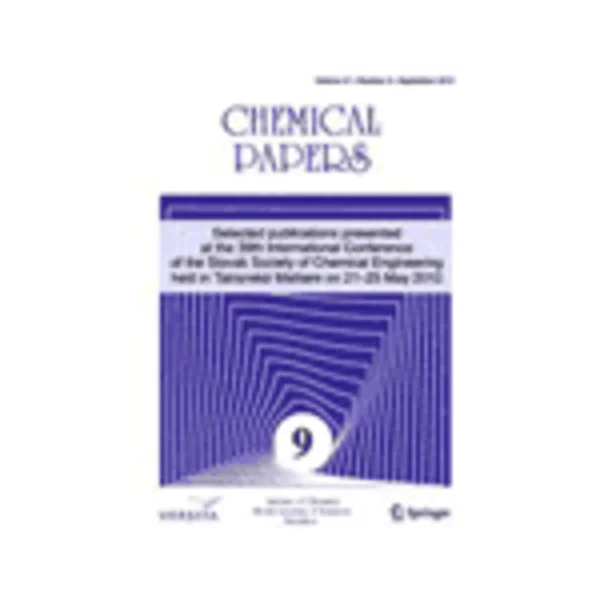-
polyaniline doped with poly(acrylamidomethylpropanesulphonic acid): electrochemical behaviour and conductive properties in neutral solutions
جزئیات بیشتر مقاله- تاریخ ارائه: 1392/07/24
- تاریخ انتشار در تی پی بین: 1392/07/24
- تعداد بازدید: 852
- تعداد پرسش و پاسخ ها: 0
- شماره تماس دبیرخانه رویداد: -
poly(2-acrylamido-2-methyl-1-propanesulphonic acid) (pampsa)-doped polyaniline (pani) layers are synthesised in the presence of sulphuric and perchloric acids. the effects of the inorganic acid as well as of the electrochemical synthetic procedure (potentiostatic and potentiodynamic deposition) and thickness of the polymer layers are studied. the focus is directed towards the ph dependence of the electrochemical redox activity and conductivity of the pampsa-doped pani layers obtained under different conditions. ascorbic acid oxidation is used as a test reaction to study the electrocatalytic behaviour of various pampsa-doped pani layers in neutral solution. it is found that the type of inorganic component present in the polymerisation solution has a marked effect on the extent of doping in acidic solutions as well as on the redox electroactivity in neutral solutions. a comparison between potentiostatically and potentiodynamically synthesised layers at ph 7 shows a markedly lower conductance and lower extent of redox charge preservation in the case of potentiodynamic synthesis. the pani electrocatalytic activity for ascorbic acid oxidation is also dependent on the polymer electrodeposition procedure, with potentiostatically synthesised layers exhibiting better electrocatalytic performance.
مقالات جدیدترین رویدادها
-
استفاده از تحلیل اهمیت-عملکرد در ارائه الگوی مدیریت خلاقیت سازمانی و ارائه راهکار جهت بهبود
-
بررسی تاثیر ارزش وجوه نقد مازاد بر ساختار سرمایه شرکت های پذیرفته شده در بورس اوراق بهادار تهران
-
بررسی تأثیر سطح افشای ریسک بر قرارداد بدهی شرکت های پذیرفته شده در بورس اوراق بهادار تهران
-
بررسی تأثیر رتبه بندی اعتباری مبتنی بر مدل امتیاز بازار نوظهور بر نقد شوندگی سهام با تأکید بر خصوصی سازی شرکت ها
-
تأثیر آمیخته بازاریابی پوشاک ایرانی بر تصویر ذهنی مشتری پوشاک ایرانی (هاکوپیان)
-
بررسی پارامترهای موثر بر مقاومت برشی و مکانیسم خرابی ستون های کوتاه بتن آرمه مستطیلی با استفاده از مدل المان محدود غیر خطی
-
بررسی میزان تأثیر پارامترهای لرزهای در رفتار دینامیکی دیوارهای خاکی میخکوبی شده
-
ارزیابی مقاومت فشاری بتن خودتراکم حاوی مواد پودری مختلف از طریق روش امواج اولتراسونیک
-
نقش اماکن گردشگری در توسعه کارآفرینی شهرها مخصوصا شهرستان ارومیه
-
activation of prosurvival signaling pathways during the memory phase of volatile anesthetic preconditioning in human myocardium: a pilot study
مقالات جدیدترین ژورنال ها
-
مدیریت و بررسی افسردگی دانش آموزان دختر مقطع متوسطه دوم در دروان کرونا در شهرستان دزفول
-
مدیریت و بررسی خرد سیاسی در اندیشه ی فردوسی در ادب ایران
-
واکاوی و مدیریت توصیفی قلمدان(جاکلیدی)ضریح در موزه آستان قدس رضوی
-
بررسی تاثیر خلاقیت، دانش و انگیزه کارکنان بر پیشنهادات نوآورانه کارکنان ( مورد مطالعه: هتل های 3 و 4 ستاره استان کرمان)
-
بررسی تاثیر کیفیت سیستم های اطلاعاتی بر تصمیم گیری موفق در شرکتهای تولیدی استان اصفهان (مورد مطالعه: مدیران شرکتهای تولیدی استان اصفهان)
-
بازشناسی تطبیقی ادبیات غنایی بر قالی سنگشکو با تاکید بر نگاره های مصور خمسه نظامی در دورۀ صفوی (مطالعه موردی: دیدار لیلی و مجنون و آبتنی شیرین)
-
بررسی تاثیر عوامل روانشناختی بر قصد خرید و تعهد مشتری (مطالعه موردی: مشتریان پوشاک هاکوپیان مشهد)
-
isolation, purification and identification of β-carotene from azolla pinnata r. br. as a new carotenoid wealthy source
-
seismic loss assessment: the case study of the power distribution network in arak city, iran
-
evaluation of aesthetic, functional, and environmental effects on the design of urban open spaces: a case study of istanbul şişhane park, turkey




سوال خود را در مورد این مقاله مطرح نمایید :